Over 100 NGOs Support Nuclear Frontline Communities in COVID-19 Relief Funding
![]() Today, the Navajo Nation and Indigenous communities in general are facing unique challenges in addressing the COVID-19 pandemic. One of those challenges is compromised immune systems and cancers due to exposure to aboveground atomic bomb tests in the United States and Marshall Islands and working in and living near the nuclear industry. Recent studies show that those with cancers are up to three times more likely to die of COVID-19 than those without.
Today, the Navajo Nation and Indigenous communities in general are facing unique challenges in addressing the COVID-19 pandemic. One of those challenges is compromised immune systems and cancers due to exposure to aboveground atomic bomb tests in the United States and Marshall Islands and working in and living near the nuclear industry. Recent studies show that those with cancers are up to three times more likely to die of COVID-19 than those without.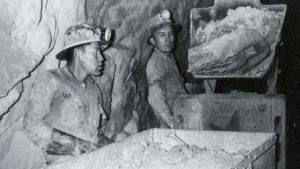 Uranium workers, including those from the Navajo Nation, have high rates of lung cancer. A key to reducing the spread of COVID-19 is providing access to medical care to those at highest risk.
Uranium workers, including those from the Navajo Nation, have high rates of lung cancer. A key to reducing the spread of COVID-19 is providing access to medical care to those at highest risk.
This week, 124 non-governmental organizations submitted a letter to the leaders of the U.S. House and Senate seeking movement on bills that would provide assistance to nuclear frontline communities. organizational-sign-on-letter-impacted-communities-covid-19 They urged funding for those more vulnerable to COVID-19, such as those exposed to the July 16, 1945 Trinity test in New Mexico and tests conducted between 1946 and 1958 in the Marshall Islands, those working in and living near the nuclear industry, and the approximately 6,000  Veterans who worked to cleanup the Marshall Islands between 1977 and 1980.
Veterans who worked to cleanup the Marshall Islands between 1977 and 1980.
The NGOs asked that the proposed bipartisan amendments to the 1990 Radiation Exposure Compensation Act (RECA) https://www.congress.gov/bill/116th-congress/house-bill/3783 and the bipartisan Medicaid for the Compact of Free Association bill https://www.politico.com/news/2020/04/16/coronavirus-uninsured-pacific-islanders-190979 be included in the next COVID-19 bill. If passed as written, the Trinity Downwinders and the Post ’71 uranium workers would be included in RECA, and Medicaid would be provided to the Marshallees.
The exposed populations are disproportionately Indigenous, people of color, veterans, low-income, and those living in rural areas. Many are now at greater risk from COVID-19 due to exposure to radiation and toxins in the environment; no running water; and lack of access to health care. These factors can result in poor health conditions and weakened immune systems.
The NGOs argued that those who have sacrificed for our country’s national security, in some cases unknowingly, should not have to carry the burden of this crisis.
Tina Cordova, co-founder of Tularosa Basin Downwinders Consortium, said, “Many of us live in fear of the virus now not only because it is highly infectious and deadly to most but because we also know we are highly susceptible to getting the virus and dying from it due to our underlying health issues as a result of being exposed to radiation.” https://www.trinitydownwinders.com/
The NGOs are working on a petition for individuals to sign in support of the nuclear frontline communities. More information about the petition will be available early next week. https://allthingsnuclear.org/guest-commentary/covid-19-nuclear-weapons
- Saturday, May 9th – proposed bomb plant expansion comments due
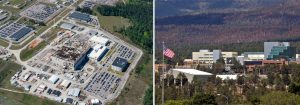 to the Department of Energy and National Nuclear Security Administration (DOE/NNSA) about the draft Supplement Analysis for Los Alamos National Laboratory. Sample public comments are available at Nuclear Watch New Mexico. https://nukewatch.org/
to the Department of Energy and National Nuclear Security Administration (DOE/NNSA) about the draft Supplement Analysis for Los Alamos National Laboratory. Sample public comments are available at Nuclear Watch New Mexico. https://nukewatch.org/ - Tuesday, June 2, 2020 – the comment period for the draft environmental impact statement
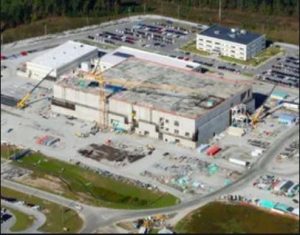 about the proposed Savannah River Site Plutonium Bomb Plant has been extended from May 18. For more information, go to https://srswatch.org/
about the proposed Savannah River Site Plutonium Bomb Plant has been extended from May 18. For more information, go to https://srswatch.org/ - July 22, 2020 – Extension of the public comment period for the Draft Environmental Impact Statement
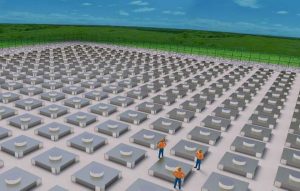 for Holtec International’s Proposed Spent Nuclear Fuel Consolidated Storage Facility extended for an additional 60 days – from May 22, 2020. Stay tuned for more information. https://www.nrc.gov/reading-rm/doc-collections/nuregs/staff/sr2237/
for Holtec International’s Proposed Spent Nuclear Fuel Consolidated Storage Facility extended for an additional 60 days – from May 22, 2020. Stay tuned for more information. https://www.nrc.gov/reading-rm/doc-collections/nuregs/staff/sr2237/ - But, wait – there’s more: This week, the Nuclear Regulatory Commission (NRC) released notice that it seeks public comment on the draft Environmental Report for a consolidated storage of spent nuclear fuel facility – similar to Holtec’s proposal – at Waste Control Specialists/Interim Storage Partners facility on the NM/Texas border
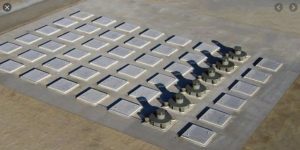 – 35 miles east of the proposed Holtec consolidated interim storage facility. There is a 120-day comment period – ending sometime in September 2020. https://adamswebsearch2.nrc.gov/webSearch2/main.jsp?AccessionNumber=ML20122A220
– 35 miles east of the proposed Holtec consolidated interim storage facility. There is a 120-day comment period – ending sometime in September 2020. https://adamswebsearch2.nrc.gov/webSearch2/main.jsp?AccessionNumber=ML20122A220 - It’s the 20th anniversary of the Cerro Grande fire. The Los Alamos Historical Society created an exhibit “Resilience and Regrowth.” https://www.losalamoshistory.org/cerrogrande While you are preparing your comments for the LANL Supplement Analysis,
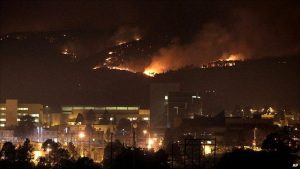 remember the trauma experienced when the fire burned for many days and came close to LANL’s Plutonium Facility (which is now proposed for expanded plutonium pit production) and Area G, which at the time of the fire, 40,000 containers (e.g., 55-gallon drums) of plutonium-contaminated waste were sitting in fabric tents on the mesa. Remember how LANL officials told us the forest would fully regenerate in seven years….
remember the trauma experienced when the fire burned for many days and came close to LANL’s Plutonium Facility (which is now proposed for expanded plutonium pit production) and Area G, which at the time of the fire, 40,000 containers (e.g., 55-gallon drums) of plutonium-contaminated waste were sitting in fabric tents on the mesa. Remember how LANL officials told us the forest would fully regenerate in seven years….
Tags: 124 organizations, COVID-19, Indigenous communities, lung cancer, Marshall Islands, Medicaid for the Compact of Free Association, navajo nation, Nuclear Frontline Communities, petition, Post '71 Uranium Workers, Radiation Exposure Compensation Act, RECA, relief funding, Support Nuclear Frontline Communities in COVID-19 Economic Relief Funding, Tina Cordova, Trinity Test, Tularosa Basin Downwinders Consortium, veterans


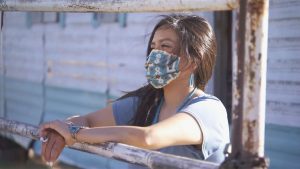
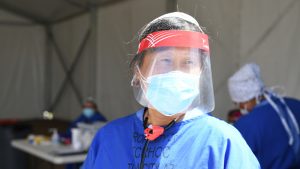

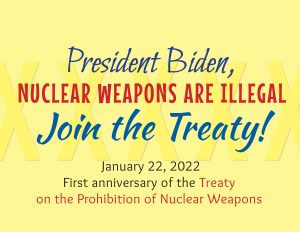
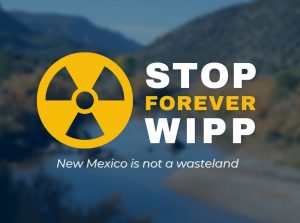






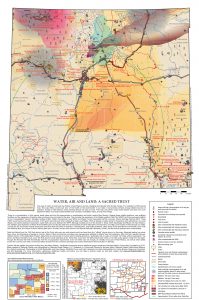
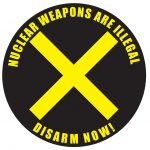
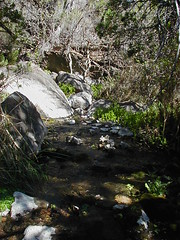

Comments
No comments so far.